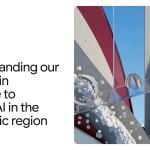As a result of rising complexity and calls for of creating customized doc options, builders might make the most of a extra highly effective and responsive library or framework. Companies, on its half, tends to extend effectivity and user-specific workflows, and builders might create them utilizing environment friendly instruments. This text explores Fluent and why it’s an interesting choice for builders who wish to construct customized doc options.
Understanding Fluent
Fluent will not be a easy library however a document automation device that gives elements to create and handle doc workflows. Such options embody creation, processing and modification, format conversion, and rendering. Essentially the most engaging function of this programme is its modularity, which gives builders with a number of modules, making it extremely versatile and scalable. The advantages of the programme are as follows:
- Modularity: The structure of the programme is predicated on distinct modules that create a tailor-made doc processing answer,
- Efficiency: The programme doesn’t overload the system and is extremely optimised for top efficiency and pace,
- Extensibility: It could possibly do greater than it’s meant to do if used with different providers,
- Cross-platform compatibility: Fluent helps a number of platforms, enabling builders to deploy options throughout completely different environments seamlessly,
- Wealthy APIs: Fluent presents a wealthy set of APIs that present fine-grained management over doc manipulation and workflow administration.
Making a customized doc answer with Fluent
Builders could make their doc options with Fluent, and listed here are the a number of steps they should comply with to take action:
Outline the scope and necessities
Earlier than they begin writing the code, builders want to obviously perceive their enterprise necessities and the scope of their doc answer. This contains defining the number of paperwork that should be processed, the output codecs which can be wanted, and any particular manipulation or knowledge extraction necessities.
Set Up the event setting
As soon as the system necessities are outlined, the following step is to arrange the event setting. This entails putting in the framework and presumably additional libraries wanted for operation. Builders ought to brush up their data about Fluent by studying the documentation and API references.
Design the doc workflow
With Fluent, you’ll be able to create complicated doc workflows, and you may carry out completely different operations on a doc at completely different phases: parsing, validation, transformation, or rendering. Thus, builders have to map the designed system and create a complete plan for a way the paperwork will circulate by the system.
Implement customized modules
As soon as builders perceive that the built-in modules are inadequate for his or her wants, they need to implement customized modules. At this stage, Fluent demonstrates its main benefit: it’s versatile sufficient so as to add a customized code that doesn’t break the present workflow and doesn’t result in spaghetti code improvement.
Combine with different options
Many documentation options contain different techniques, like databases, cloud storage, content material administration techniques, or any third-party software program that gives knowledge for the paperwork. With Fluent, builders can simply combine their system with such providers and construct a system with varied sources.
Take a look at your answer
Builders might want to guarantee the standard of their answer earlier than releasing it, utilizing Fluent’s instruments for unit testing and efficiency benchmarking.
Deploy and preserve
As soon as the system is examined and polished, builders can deploy their answer, which is simple with Fluent’s cross-platform help. Nevertheless, this isn’t the top; the techniques must be constantly up to date: you’ll have to add further performance to fulfill new rising enterprise wants, and new shoppers will probably be offering knowledge or planning to scale.
Conclusion
Fluent is an answer that gives a flexible base and a strong basis for builders engaged in creating customised document-related options. It’s modular, environment friendly, and contains a range of APIs, so it may be used to deal with document-related duties of various complexity. By appropriately utilizing this answer, corporations can develop the goal and cost-effective doc options that they want.
Rick Mur and the GNX group will probably be sharing extra of their experience at this yr’s Cyber Security & Cloud Expo Europe. Swing by GNX’s sales space at stand #214 to listen to extra about efficiently navigating the worldwide connectivity panorama.
Discover different upcoming enterprise expertise occasions and webinars powered by TechForge here.
Source link
#Constructing #customized #doc #options #Fluent #builders #perspective
Unlock the potential of cutting-edge AI options with our complete choices. As a number one supplier within the AI panorama, we harness the ability of synthetic intelligence to revolutionize industries. From machine studying and knowledge analytics to pure language processing and laptop imaginative and prescient, our AI options are designed to boost effectivity and drive innovation. Discover the limitless prospects of AI-driven insights and automation that propel your corporation ahead. With a dedication to staying on the forefront of the quickly evolving AI market, we ship tailor-made options that meet your particular wants. Be part of us on the forefront of technological development, and let AI redefine the best way you use and reach a aggressive panorama. Embrace the long run with AI excellence, the place prospects are limitless, and competitors is surpassed.










